10 Hidden Heritage Sites in the Himalayas That You Must Explore
From the Tabo Caves in Himachal Pradesh to the ancient town of Dwarahat in Uttarakhand, here are 10 hidden heritage sites that you must explore on your next trip to the Himalayas.
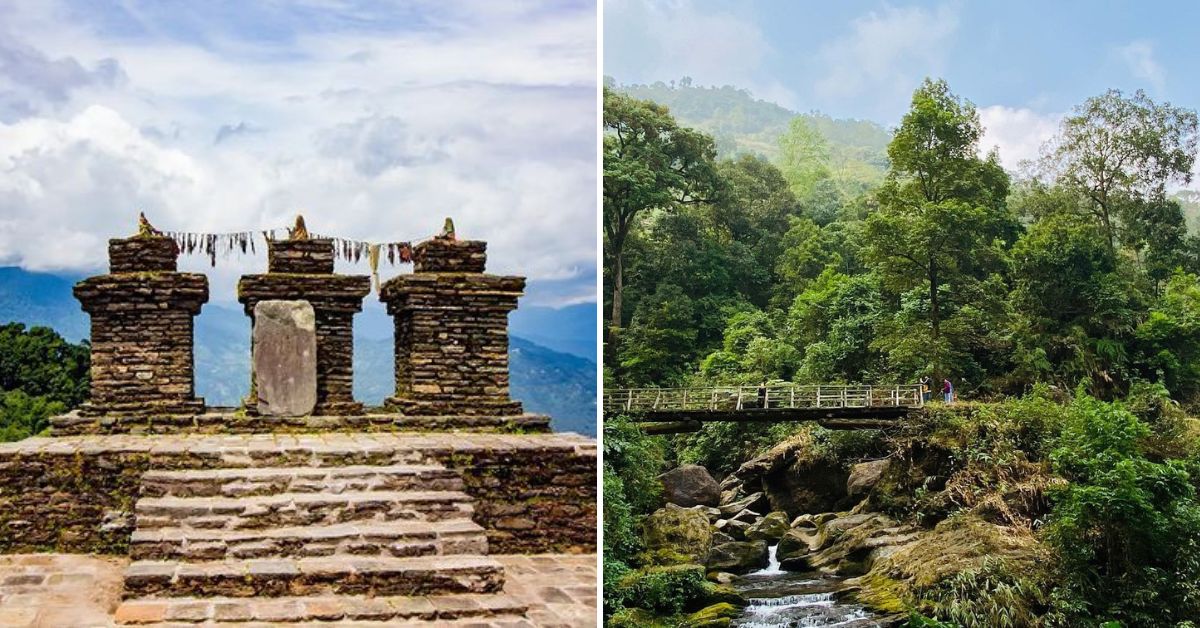
The majestic Himalayas have always been a subject of awe and admiration — be it for their geographical advantages, their cultures and communities, or, more popularly, as tourist destinations for city dwellers looking to escape their regular lives.
There’s a lot you may have read about satiating your adventurous spirit amid these mountains, but a lesser explored faction remains the mystic heritage sites, each with an alluring story to tell.
Discover ancient ruins, centuries-old village lanes, a glimpse into the lives of royals, and stories buried by the sands of time in these 10 hidden heritage sites that deserve a place on your bucket list.
1. Tabo Caves
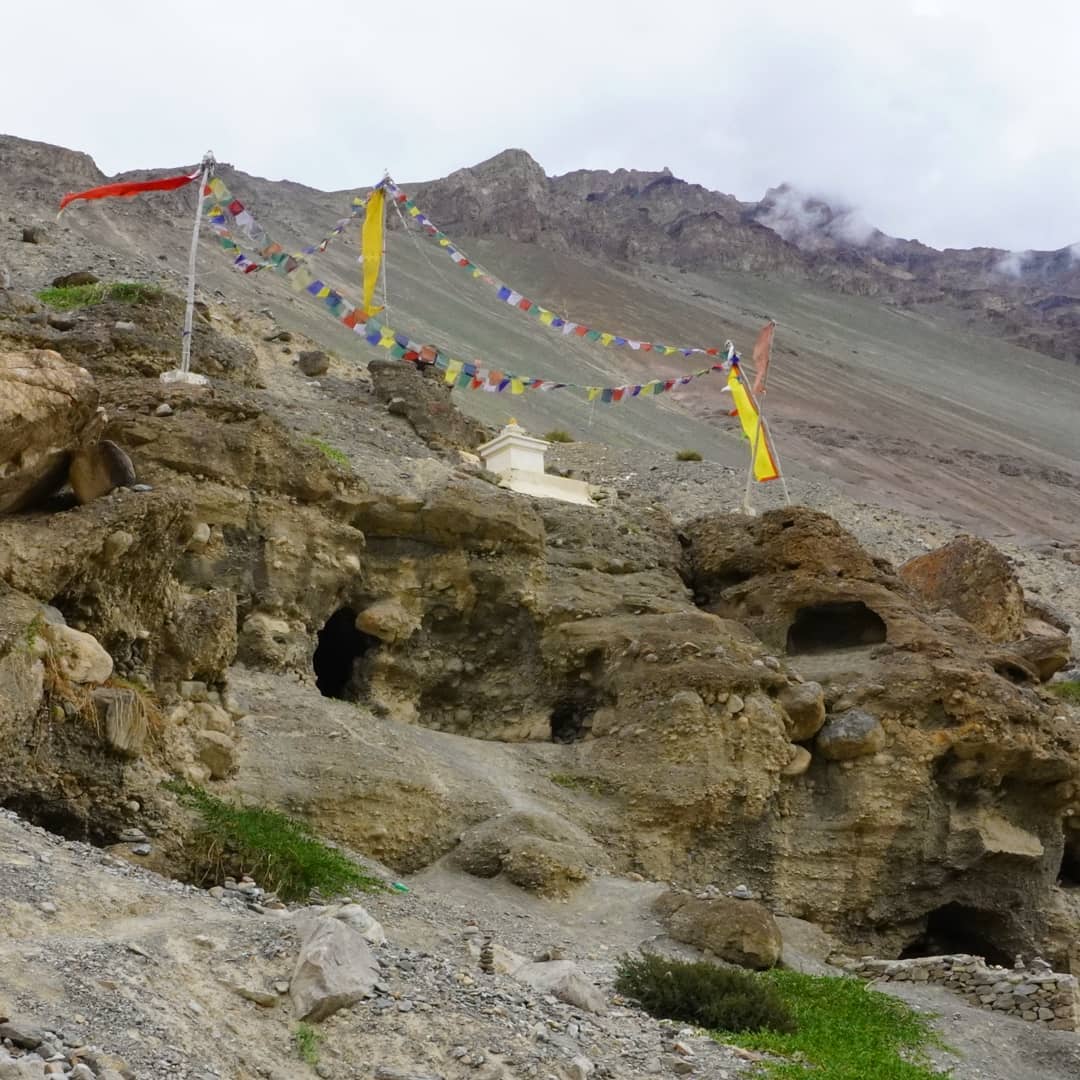
Situated in the lap of the majestic Spiti Valley, Tabo is a small village surrounded by the Leo Pargil peak on the east and the Manirang mountain ranges on the west.
Among the major attractions of this quaint little village is the 1,000-years-old Tabo Monastery, known for its unique architecture and heritage.
Just above the monastery are the magnificent Tabo caves, which are believed to have served as assembly halls and dwellings for monks during harsh winters. To reach the caves, one needs to climb a flight of steps to the hill, which also houses a small temple and chamber for prayers and rituals.
These man-made caves overlook the verdant Spiti River and are a perfect spot to get a splendid view of the entire village of Tabo.
How to reach: The nearest railway station is the Kalka railway station, located at a distance of 452 km from Tabo. The closest airport is the Kullu airport, at a distance of 280 km from Tabo.
2. Rabdentse, Sikkim

Rabdentse, which was the second capital of the former Kingdom of Sikkim between 1670 and 1814, is currently an archaeological site.
Now in ruins, this area is located very close to the Pemayangtse Monastery near Pelling and offers a magnificent panoramic view of the Kanchenjunga range.
Once the capital of the Namgyal dynasty, what remains of the ancient city now are just a few “chunky wall stubs”. These ruins hold the old tales of the dynasty.
One can also see the Three Chortens, which were the place of worship of the former royal family of Sikkim. A stone throne called the Namphogang, which was the throne of the judge during the time of the Chogyal dynasty, still remains in good condition.
How to reach: The nearest railway station is the New Jalpaiguri railway station, which is at a distance of 131 km. The closest airport is Bagdogra airport, at a distance of 137 km.
3. Pari Mahal, Jammu & Kashmir
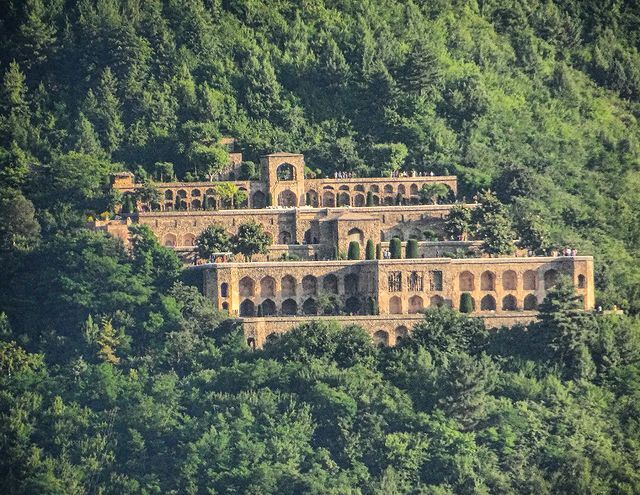
Pari Mahal, or ‘the angels’ adobe’, is a seven-terraced garden located on top of the Zabarwan mountain range in Kashmir Valley.
This hidden heritage site, which overlooks the city of Srinagar and the beautiful Dal Lake, is an observatory and ancient school of astrology.
Built by Shah Jahan’s eldest son Dara Shikoh in honour of his Sufi tutor Mullah Shah Badakhshi in the mid-1600s, the Pari Mahal is believed to have served as the prince’s library, spiritual centre, and dwelling place.
The unique location and the height at which it was built made it perfect to act as an observatory.
How to reach: The nearest airport is at Srinagar, which is at a distance of 21 km. The nearest railway station is the Srinagar railway station, at a distance of 20 km.
4. Thembang, Arunachal Pradesh
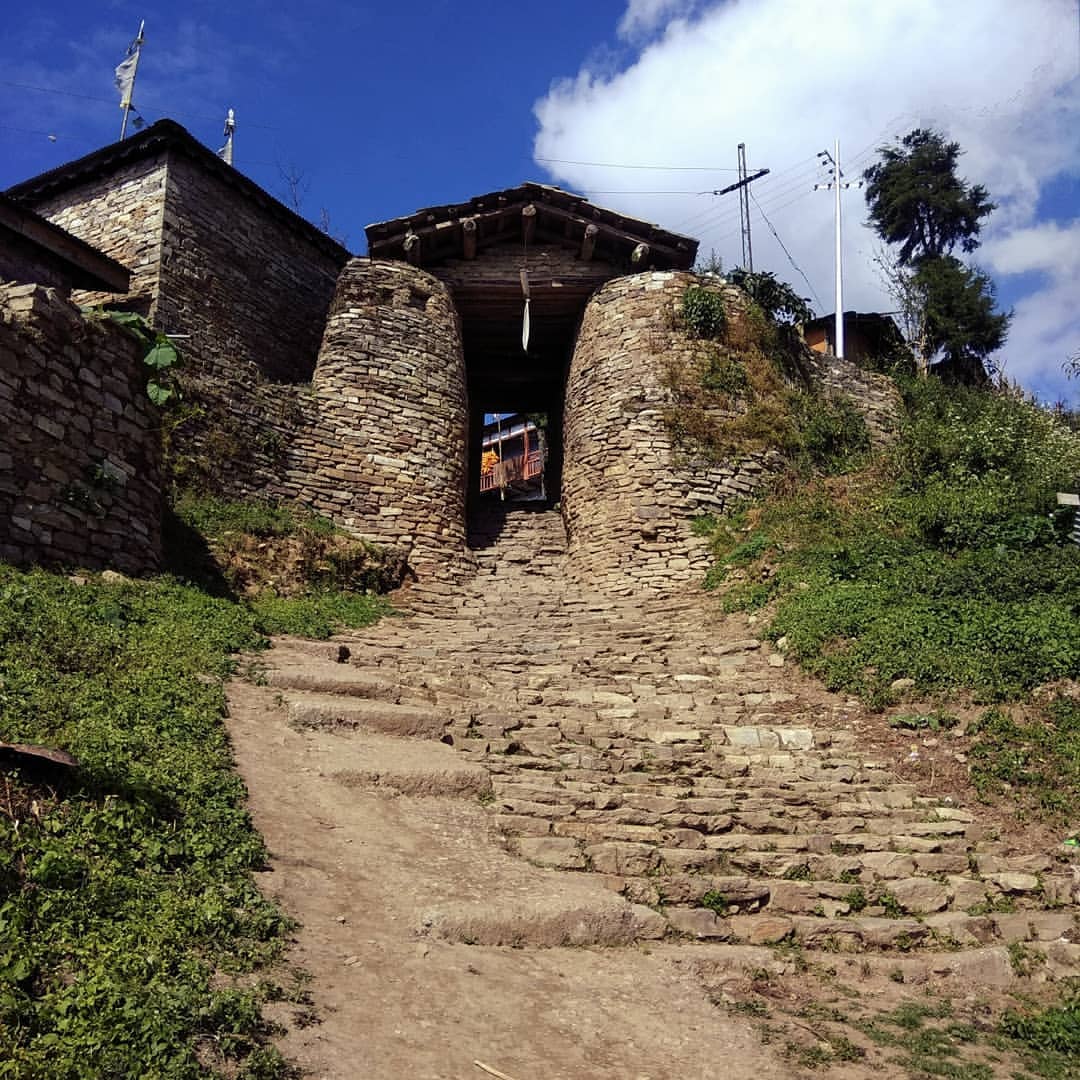
Situated in a remote corner of Western Arunachal Pradesh, Thembang is an ancient village and home to the Monpa tribes of Arunachal Pradesh.
The village is noted for hosting several ancient and historical structures, especially the fortified Dzong constructed using traditional techniques like composite stone masonry and wooden architecture.
Surrounded by lush green hills and snow-clad mountains, it was once the headquarters of a large territory ruled by the powerful Thembang Bapu, who is said to be the direct descendent of the King of Tibet.
The villagers here respect the ecological richness by incorporating its aspects into their socio-religious practices.
Currently, there are around 50 households in the village, making the total population around 250.
How to reach: The nearest airport is the Tezpur airport, at a distance of 172 km. The nearest railway station is the Guwahati railway station, at a distance of 353 km.
5. Martand Sun Temple, Jammu & Kashmir
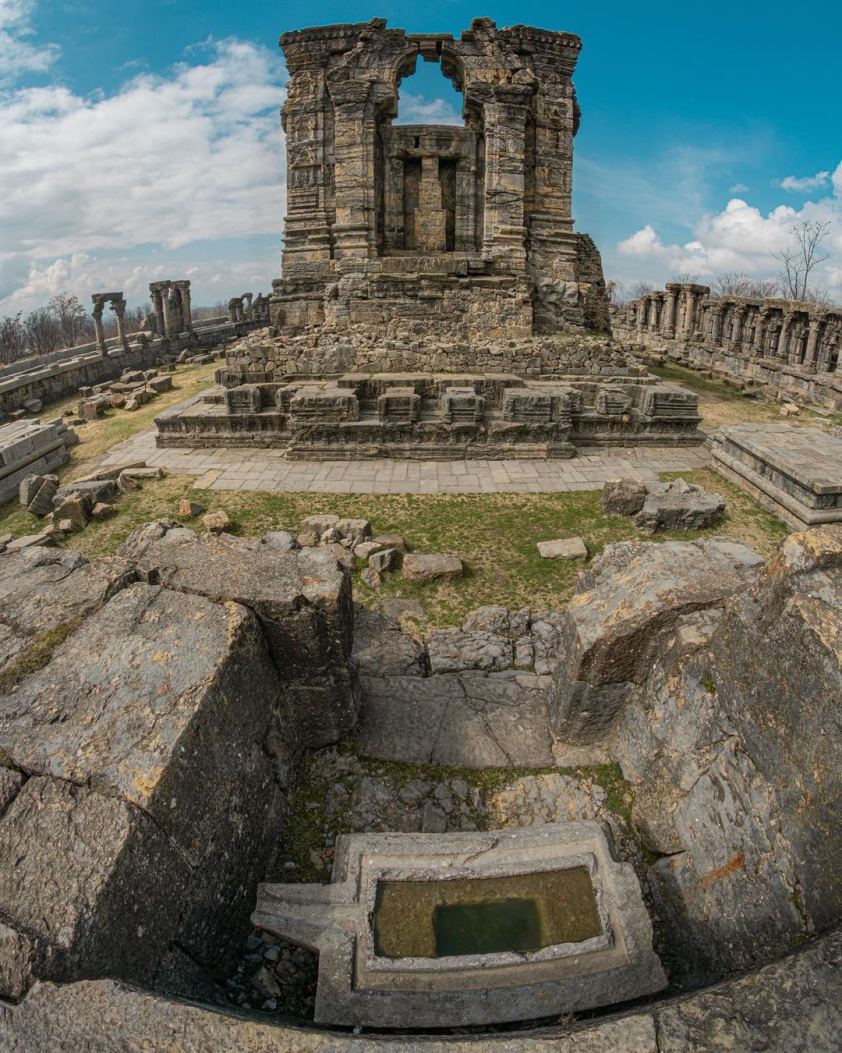
Built during the 8th century CE, the Martand Sun Temple, or Pandou Laidan, is an ancient Hindu temple dedicated to the Sun God.
Located in Anantnag in Jammu and Kashmir, it has a panoramic view of the Kashmir Valley, and is considered a fine specimen of the Kashmiri style of architecture.
Built by Lalitaditya Muktapida, the third ruler of the Karkota Dynasty, it was destroyed by Muslim ruler Sikandar Shah Miri, has remained in ruins ever since.
How to reach: The nearest airport is the Srinagar airport which is at a distance of 172 km. The nearest railway station is the Anantnag railway station, at a distance of 68 km.
6. Dwarahat, Uttarakhand
An ancient town situated in the Almora district of Uttarakhand, Dwarahat is noted for housing several ancient temples mostly built by the Katyuri kings. The name translates to ‘way to heaven’ in the local language.
The town was once a centre of power for the Katyuri and Chand dynasties. It has eight temple complexes that host 55 temples within the village. These temples, built between the 10th and 12th centuries, were constructed in the Indo-Aryan, Maru-Pratihara or Nagara style of architecture.
How to reach: The nearest airport is the Pantnagar airport which is at a distance of 112 km from the location. The nearest railway station is the Kathgodam railway station, at a distance of 109 km.
7. Garli-Pragpur, Himachal Pradesh
Garli and Pragpur, twin villages in Kangra district, are known for their grand havelis, which were built in the 19th and 20th centuries by timber merchants of the Sood or Sud clan.
Though most of the descendants have moved out of the villages, the structures they left behind still carry their footprints.
The Suds, who travelled extensively across the world, were influenced by different cultures like the Portuguese, Italian, and Islamic. Traverse the old lanes of these villages to experience how they amalgamated all these styles in their buildings.
How to reach: The nearest airport is the Gaggal airport which is at a distance of 59 km. The nearest railway station is the Amba Andaura railway station, at a distance of 18 km.
8. Masroor Rock Cut Temples, Himachal Pradesh
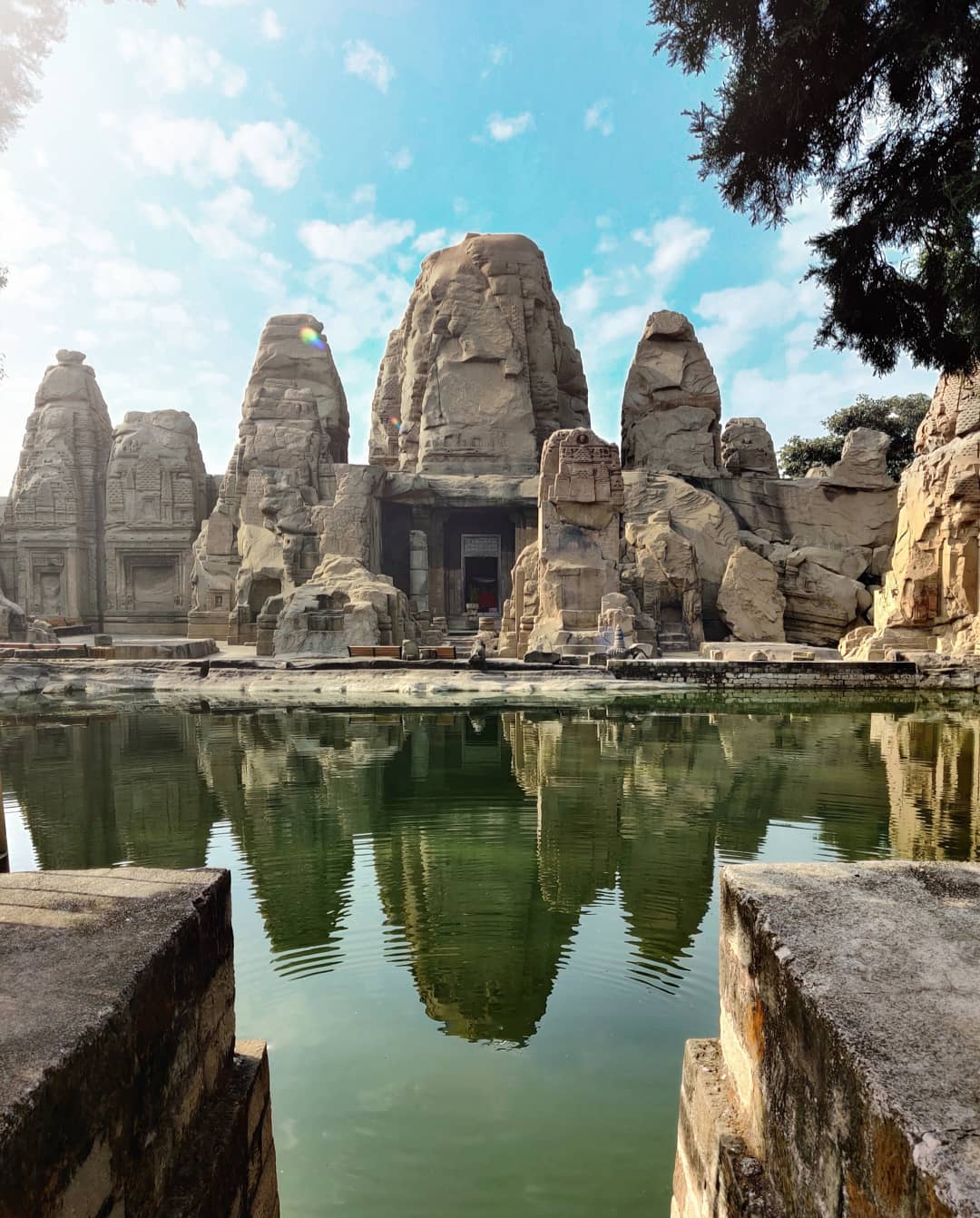
The Masroor rock-cut temples are an early 8th -10th century complex of Hindu temples situated in the Kangra Valley.
They face the Dhauladhar range of the Himalayas and are dedicated to Shiva, Vishnu, Devi and Saura traditions of Hinduism.
Ancient texts on the temple architecture suggest that these temples were carved out of a single rock stand in front of a large pool of water. The temple complex is believed to have been built by artisans who moved between the regions of Central India and Kashmir.
How to reach: The nearest airport is the Gaggal airport which is at a distance of 35.6 km from the location. The nearest railway station is the Daulatpur railway station, at a distance of 79 km.
9. Devalgarh, Uttarakhand
A historical hill town situated in the Pauri district of Uttarakhand, Devalgarh was once the capital of the erstwhile Garhwal kingdom.
Nestled amid lush greenery, it derived its name from King Deval of Kangra, who established the town in 1512. Devalgarh has several ancient temples, the most famous among them being the Maa Raj Rajeshwari Devi temple, noted for its architecture.
There are also several spots where one can witness the breathtaking views of the hill ranges, as well as the beautiful sunrise and sunset.
How to reach: The nearest airport is the Jolly Grant airport in Dehradun which is at a distance of 57 km from the location. The nearest railway stations are at Haldwani, Dehradun or Kathgodam.
10. Mongpu, West Bengal
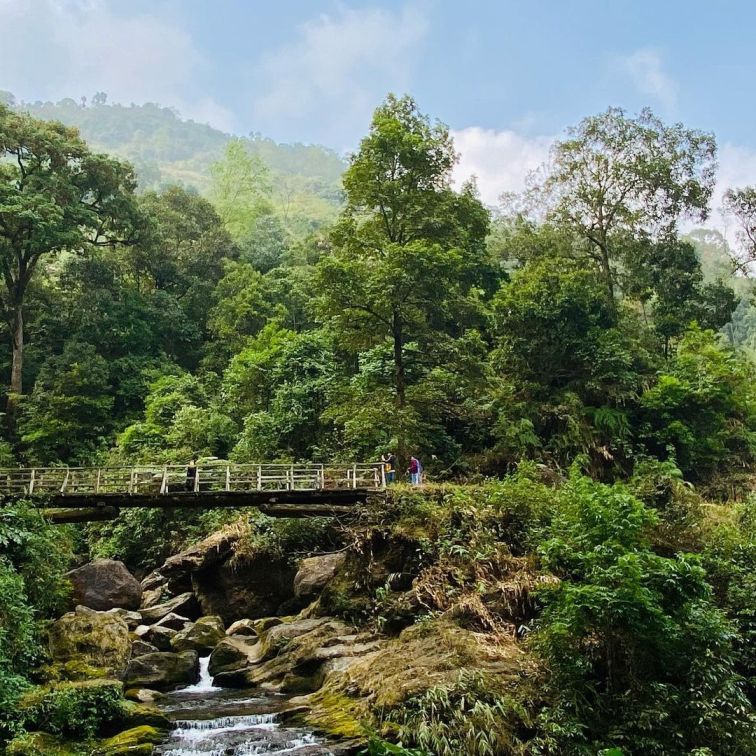
A small mountain village in Darjeeling, Mongpu is famed for its scenic locations, verdant tea gardens, clear water streams, orchid nurseries, and cinchona plantations. The cinchona plants are used to extract quinine, a medicine used for curing malaria.
Mongpu is also famous for Rabindra Bhavan, a bungalow where poet Rabindranath Tagore spent his last years.
How to reach: The nearest airport is the Bagdogra airport which is at a distance of 57 km from the location. The nearest railway station is the New Jalpaiguri railway station, at a distance of 54 km.
Sources:
TABO MONASTERY, MURALS, CAVES & ROCK CARVINGS IN HIMACHAL, by Anuradha Goyal; published by Inditales on 17 August 2015.
Rabdentse Ruins Pelling by Tour my India.
Pari Mahal by Government of Jammu and Kashmir.
Thembang Fortified Village by UNESCO
Martand Sun Temple by Incredible India.
Dwarahat by Uttarakhand Tourism
The Heritage Village of Garli, by Karen Faye D’Souza; published by Outlook Traveller on 13 January 2021.
Masroor Rock Cut Temple, Kangra by Tour my India.
Devalgarh by Uttarakhand Tourism.
Mongpu or Mungpoo: The Summer Retreat of Tagore by North Bengal Tourism.
Edited by Divya Sethu
If you found our stories insightful, informative, or even just enjoyable, we invite you to consider making a voluntary payment to support the work we do at The Better India. Your contribution helps us continue producing quality content that educates, inspires, and drives positive change. Choose one of the payment options below for your contribution- By paying for the stories you value, you directly contribute to sustaining our efforts focused on making a difference in the world. Together, let’s ensure that impactful stories continue to be told and shared, enriching lives and communities alike. Thank you for your support. Here are some frequently asked questions you might find helpful to know why you are contributing?

This story made me
-
97
-
121
-
89
-
167
















